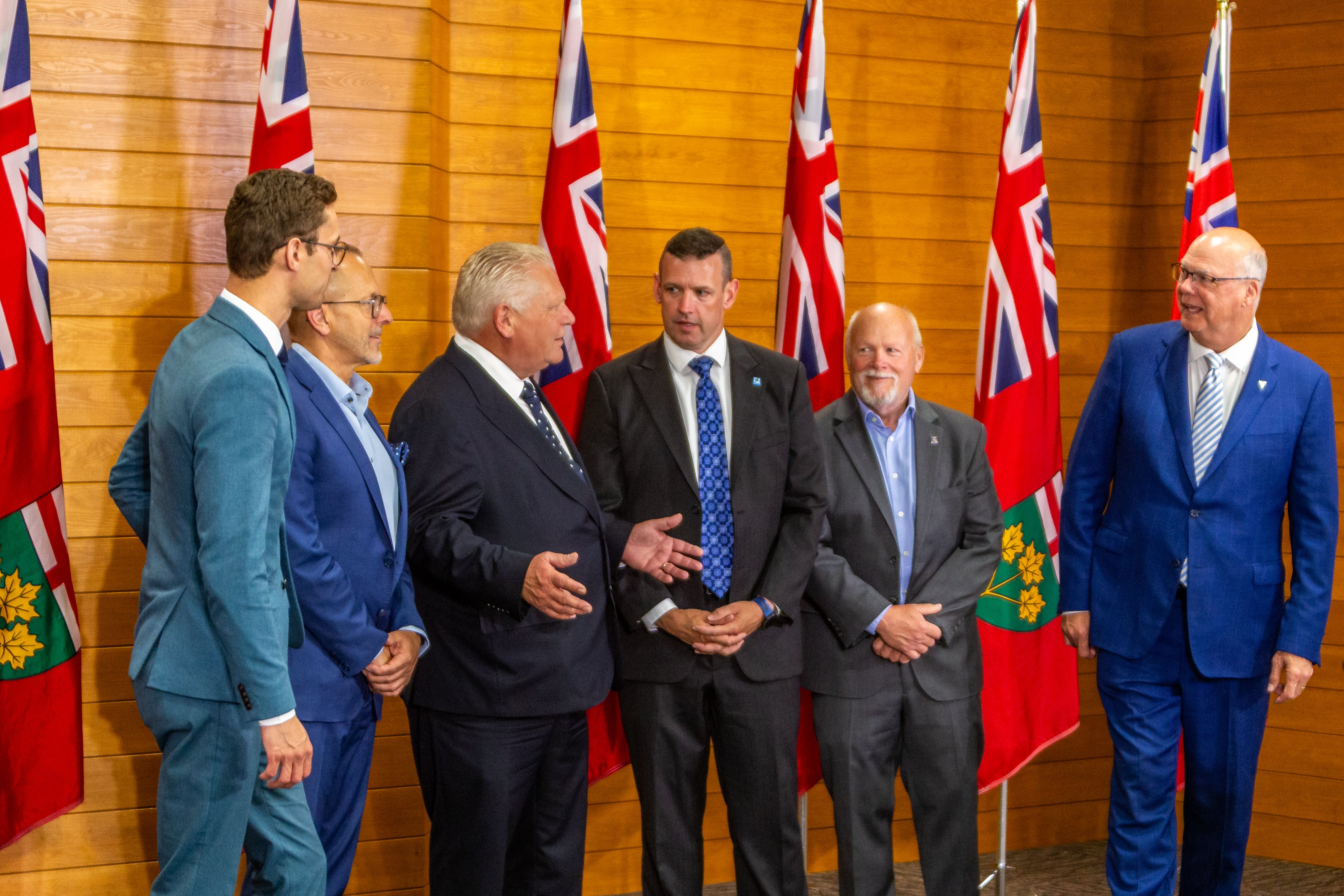
City receives $2.5 million through second round of Province’s Building Faster Fund

Funding recognizes progress in meeting housing targets
The Province of Ontario has recognized the City of St. Catharines for its progress in meeting provincial housing targets.
Premier Doug Ford and Minister of Municipal Affairs and Housing Rob Flack were welcomed to St. Catharines today to announce the second round of funding through the province’s Building Faster Fund. St. Catharines received $2.5 million for its work helping support getting shovels in the ground for new housing construction. The funding, part of a three-year, $1.2-billion program aimed at helping municipalities to speed up approval processes and get more homes built faster, is in recognition of the City achieving 85 per cent of its housing target, breaking ground on 782 new housing units.
Wednesday’s funding announcement brings the total of provincial funding to the City through the Building Faster Fund to more than $4.8 million over the last two years.
“Accelerating construction of housing has been a top strategic priority for the City over the last two years, and the support from partners such as the provincial government is critical in helping us get more housing built in our community,” said Mayor Mat Siscoe, who in 2024 directed City staff to adopt a housing-focused approach to expedite planning and development applications. “Addressing the housing crisis requires creative solutions that have only been made possible by the partnerships we’ve established with the Province and other levels of government.”
When the Building Faster Fund launched in 2023, the City committed to a housing pledge of 11,000 new homes. Municipalities that have reached at least 80 per cent of their provincially assigned housing target for the year are rewarded through the program. As a community with aging infrastructure, the support not only helps the City address challenges in keeping projects moving, but supports investments in community infrastructure that help stimulate construction of more new homes of all types.
“The allocation of this funding underscores the City’s commitment and vision for sustainable growth and signifies our place at the table to commit to building a vibrant community with a range of housing choices,” said CAO David Oakes. “I want to thank the dedicated City staff who have supported our efforts to reach our housing targets and work towards achieving the goals laid out in our strategic plan, with the balance of meeting our legislative requirements and policies.”
Over the 2024 calendar year alone, the City issued permits for 411 dwelling units, despite challenging market conditions. Over the first six months of 2025, the City has continued to see momentum with new housing units coming online and new projects beginning construction. The development sector has noted the City’s policies and initiatives, combined with a decreasing trend for interest rates, will assist with future housing projects and have a positive impact on housing supply in the community. Several key developments are also near approval and will support increased housing supply across the City.
Specific infrastructure initiatives include comprehensive flow monitoring and capacity mapping being completed in development priority areas, addition of inflow and infiltration information into a Master Servicing Study, while continuing to develop additional policies and financial incentives to streamline approvals and stimulate new growth. These incentives include affordable and accessible housing fee reimbursement policies and a development charge discount program for purpose-built rental units, as well as doubling grants for creating interior accessory dwelling units (ADUs) and quadrupling grants for detached ADUs.
“I am proud of the progress we’re making and grateful for the continued partnership with Premier Ford and the Ontario Government,” said Mayor Siscoe. “We remain committed to speeding up the approval process for new development and sending a signal to the community that we are ready to make investments in housing-enabling infrastructure and other initiatives to keep our community growing in a way that supports not only sustainable growth in terms of housing supply, but also more diverse housing options, including affordable and attainable housing.”
